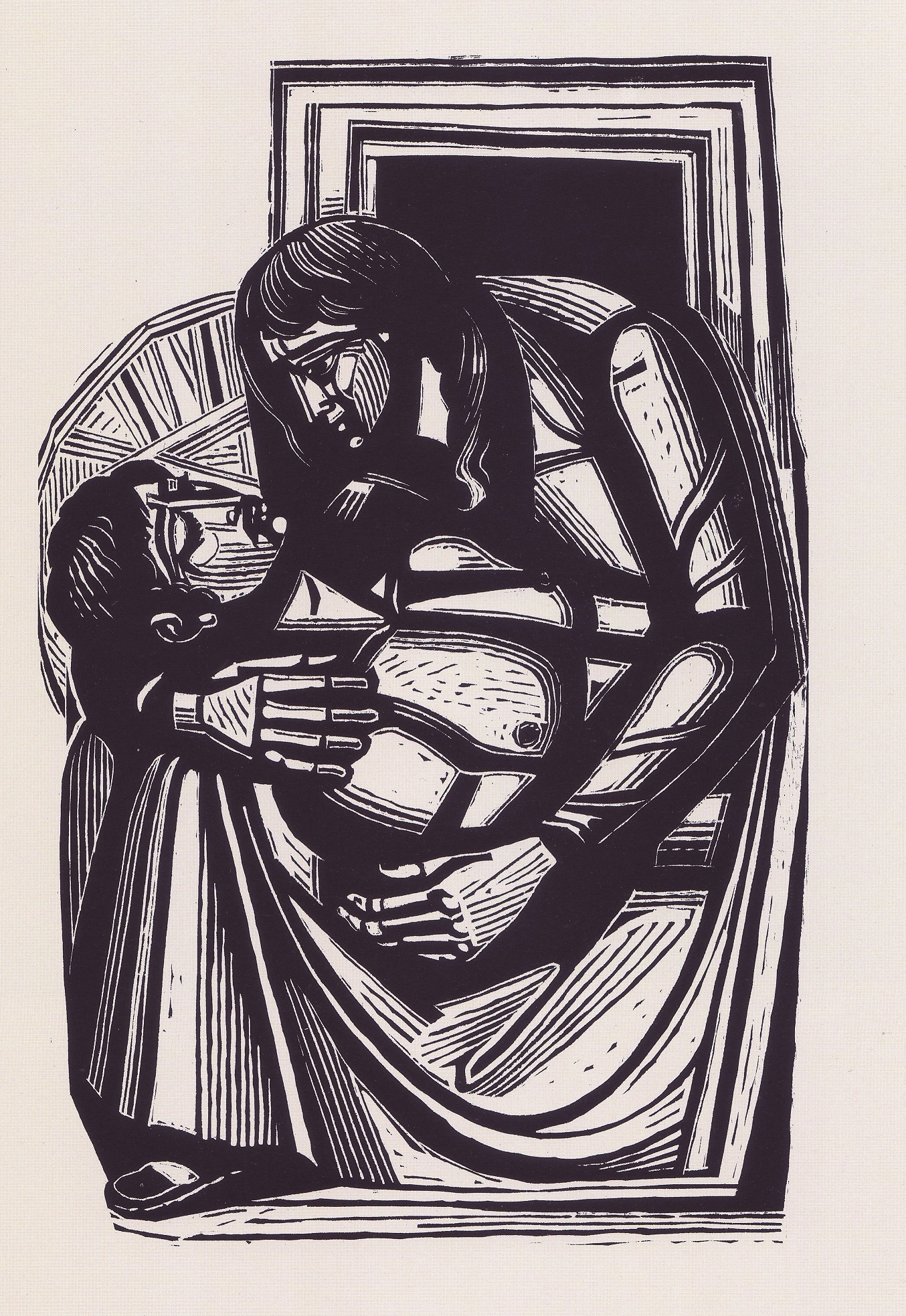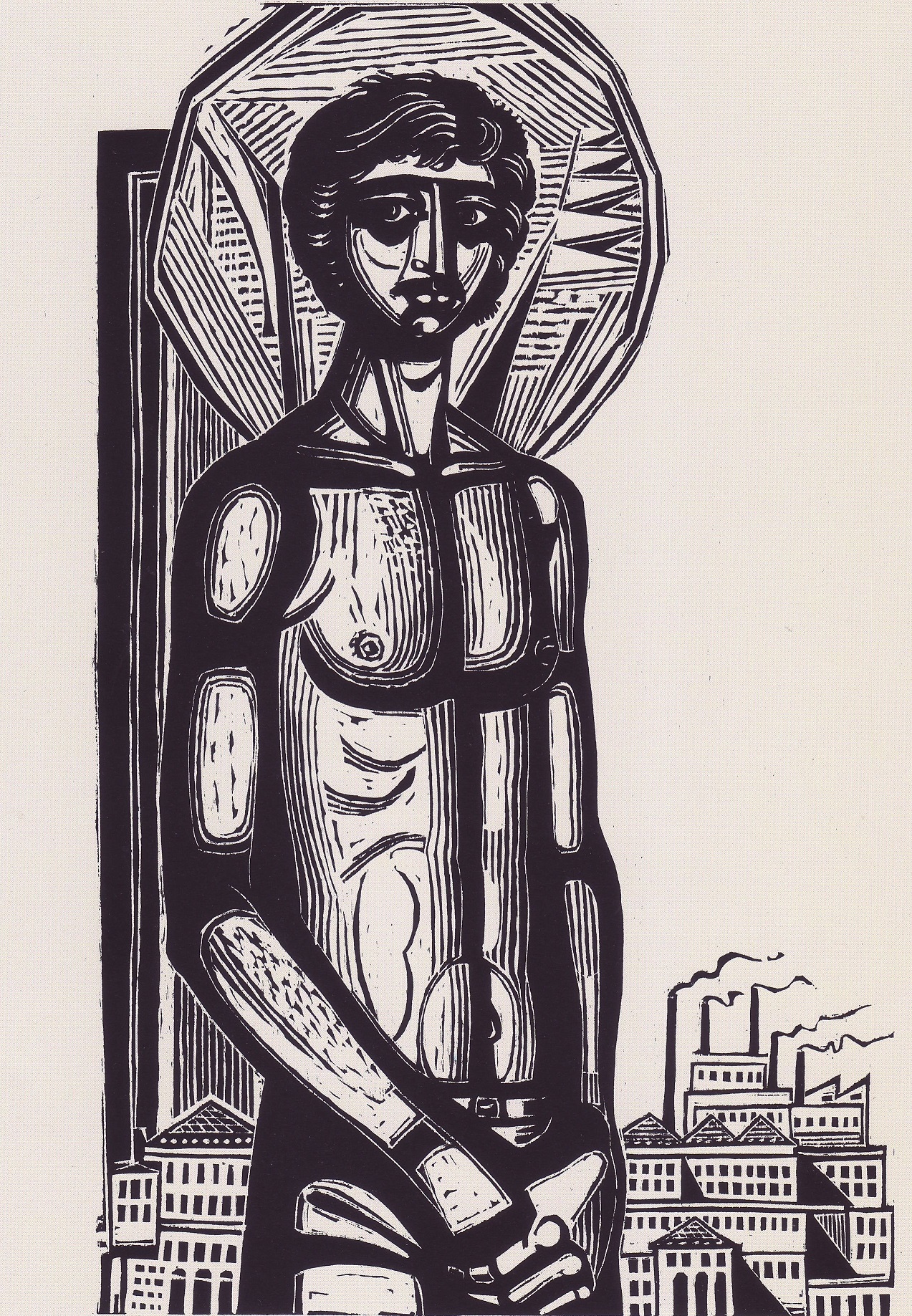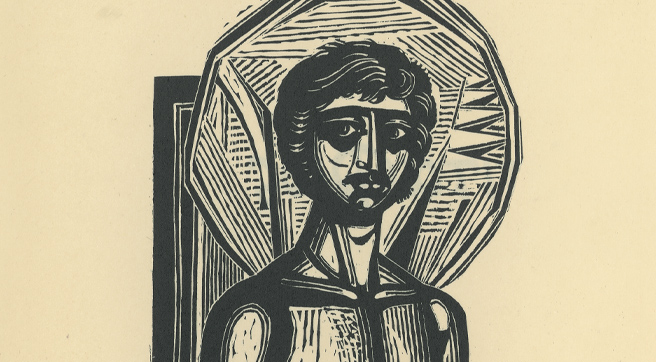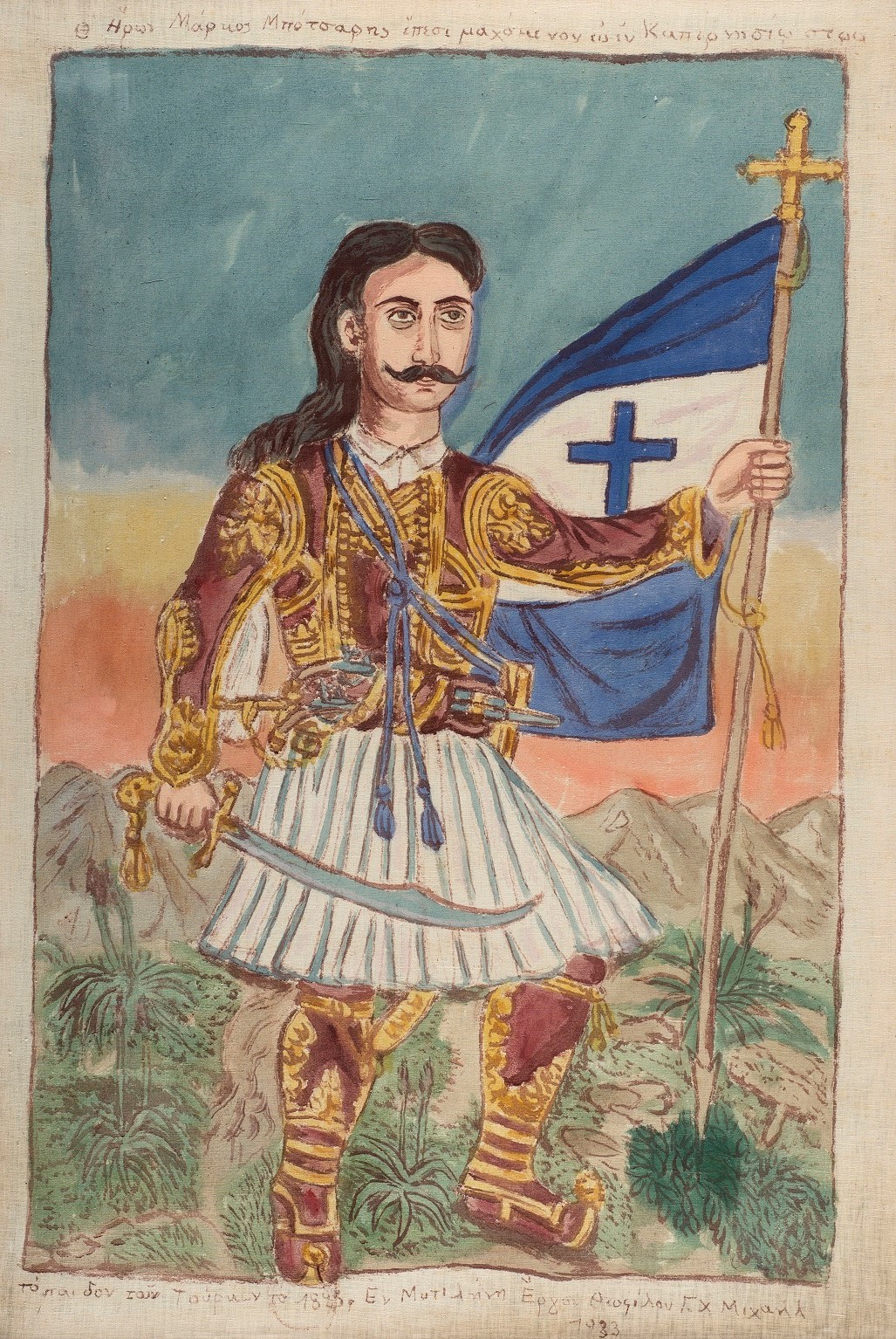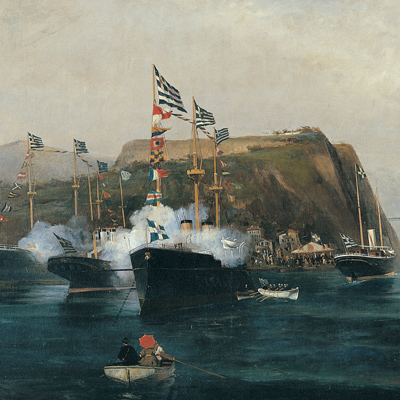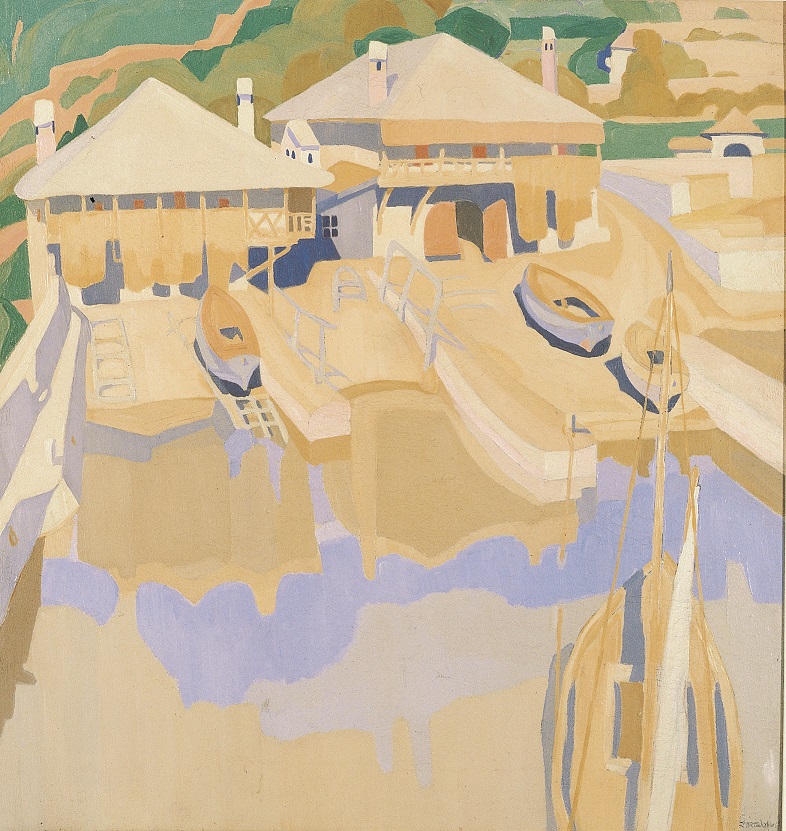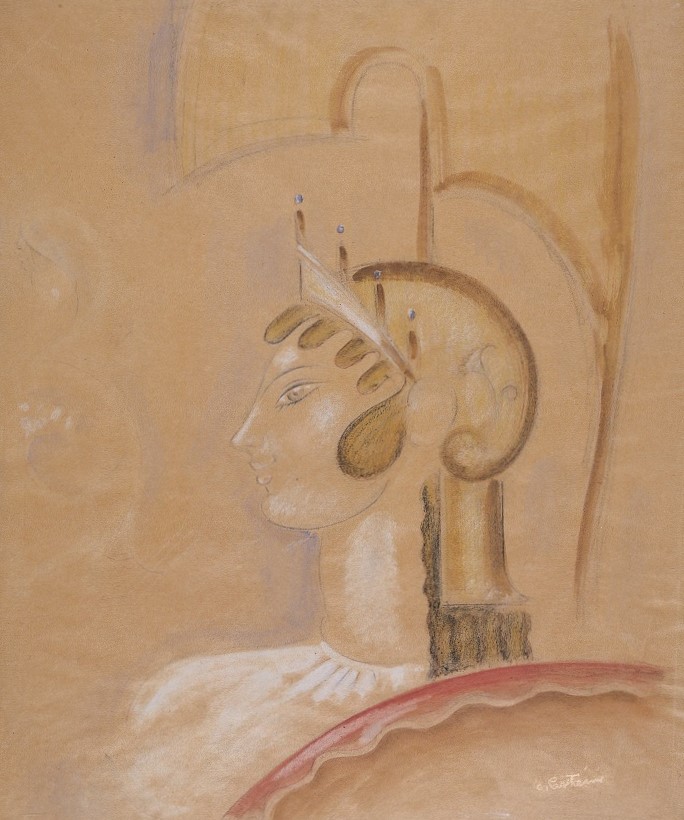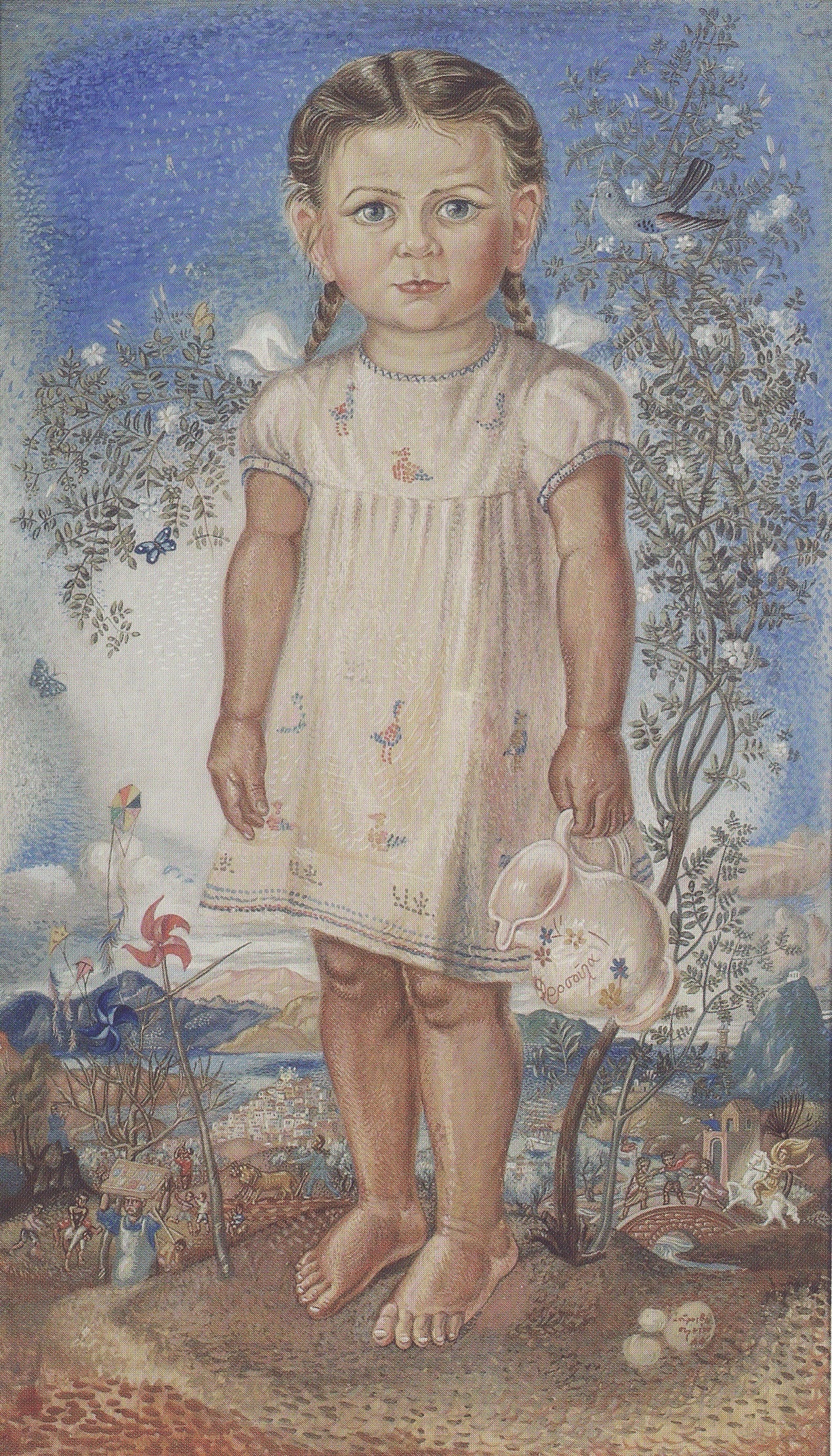Α. Tassos, Epitaphios (illustration)
The 1979 edition of the poem Epitaphios by Yiannis Ritsos was illustrated by renowned Greek engraver A. Tassos. The Alpha Bank Art Collection features one of the limited copies of the 30th anniversary edition. The illustrations of A. Tassos are extensive and equally important to his prints.
The poetry collection
Yiannis Ritsos wrote the poem Epitaphios about the death of a young man during the labour demonstrations in Thessaloniki in 1936. This death, and the lament of the mother, greatly moved and inspired the poet.
Tassos’ choice to illustrate this later edition was not accidental. As an artist, he was particularly interested in current history and social evolution.
The frontispiece
A representation of Tasos Tousis, the young man who was killed and to whom Epitaphios is dedicated. The symbolic elements surrounding the figure are:
- The Thessaloniki factories.
- A halo around the young man’s head.
Contents and artistic style
Tassos created 5 more full-page, black and white woodcuts to accompany the poems of the publication. The woodcut of the first poem is a representation of the young man’s lamenting mother.
The engraver used his signature idiom that made him recognisable in the field. He was intently focused on capturing the expressiveness of the eyes. Silhouettes follow the iconographic models of the Byzantine art. At the same time, the artist uses sanquir (proplasmos), meaning the basic darker colour of the composition, on the entire surface of the piece.
Shading and perspective are completely absent. The symbolism in the representations is central to the creation of the piece.
His life in a nutshell
A. Tassos (Anastasios Alevizos, 1914-1985) was born in Lefkochora, Messinia.
He studied at the Athens School of Fine Arts (1930-1939):
- Painting, under Thomas Thomopoulos, Umberto Argyros and Konstantinos Parthenis.
- Engraving, under Jean Kefalinos, as one of his first students.
During the German Occupation of Greece, he was a member of the Artists’ National Liberation Front. He designed posters and participated in the illustration of resistance albums.
Besides engraving, he also worked extensively and very successfully in graphic arts.
Artistic influences
The main landmarks in Tassos’ career and the shaping of his creative idiom were:
- His acquaintance with Dimitris Galanis, the founder of Greek engraving. The occasion was Galanis’ exhibition at Iliou Melathron in Athens in 1928.
- His apprenticeship under the exceptional engraver and director of the School of Fine Arts, Jean Kefalinos. Kefalinos’ workshop was an incubator for the first generation of major Greek engravers.
- His term as an art consultant at the Aspioti-ELKA Graphic Arts Factory from 1948 until his death in 1985.
Originally his works were influenced by Expressionism. However, when he became familiar with Galanis’ work, he was deeply influenced by his artistic perspective.
Favourite themes
Initially Tassos drew inspiration from the Greek landscape and its particular nature. At the same time, he was interested in urban life. However, the common denominator in all his works was the element of social sensitivity.
Using the technique of coloured woodcuts, we turned to rendering the Greek countryside. In this context, he specifically focused on his homeland, Messinia, and its people.
After 1960 the engraver turned to large, austere compositions with symbolic figures. He created series of symbolic and commemorative pieces in 2 periods (White-Black and White-Black 2). During this phase, he worked on:
- Themes with strong social protest elements.
- The recording and visual representation of political events in Greece and Cyprus.
From engraving to graphic arts
In his artistic course, Tassos was focused solely on engraving, and more specifically on woodcuts.
After 1950 and for about a decade, he turned away from black and white woodcuts and started using colour in his prints. He later returned to the style that made him known and was typified by:
- Studied figures.
- Abstract elements.
- Deep influences from Byzantine icon painting.
Tassos was able to combine engraving and graphic arts with remarkable results. Woodcut prints had a defining role in his illustration work. In fact, in 1936, Zacharias Papantoniou had said that Tassos was destined to illustrate books.
Tassos worked on:
- Illustrations of books and albums.
- Posters and pamphlets.
- Postage stamps for Greece and Cyprus.
A recognised artist
Tassos is considered one of the top Greek engravers of the post-war era.
In 1954 he started working with the Hellenic Post to design postage stamps. He ended this collaboration in 1967, when the Greek Junta was established.
However, he designed all the postage stamps for the Republic of Cyprus from 1962 until his death in 1985.
With the exception of the Junta period, Tassos held important solo exhibitions. Top among them was the exhibition at the National Gallery in 1975, which attracted many visitors.
The National Gallery also honoured the artist with a large retrospective exhibition in 1987. Today it boasts the most complete collection of his works.
A rare find
The 30th anniversary edition of Yiannis Ritsos’ Epitaphios by Kedros Publications, illustrated by A. Tassos, had a print circulation of 2,000 copies. The Alpha Bank Art Collection features copy number 2.
It was printed on Fabriano paper, at the Aspioti-ELKA Graphic Arts Factory, where Tassos was the art director (1952-1985).
A. Tassos and Alpha Bank
The collaboration between Alpha Bank and Tassos started in 1964 and continued until the end of his life. Between 1971 and 1980 the engraver was the art director for all Alpha Bank publications.
He also worked as a commissioned artist. One of his commissioned pieces was the portrait of the Alpha Bank founder, Ioannis F. Costopoulos, based on a painting by G. Iakovidis.
The Alpha Bank Art Collection also features the artist’s work Noon.
The work of art in our publications
Tassos’ illustration of Epitaphios by Yiannis Ritsos is referenced in the publication The Alpha Bank Collection. Paintings – Prints – Sculptures, edited by Irene Orati. The publication marks the 125th anniversary of Alpha Bank.
Buy the publication The Alpha Bank Collection. Paintings – Prints – Sculpture (only available in Greek) on the Alpha Bank eshop.
The Alpha Bank Art Collection is not open to the public.
Research visits to the Art Collection can be organised upon request.
Contact us to book your visit.

